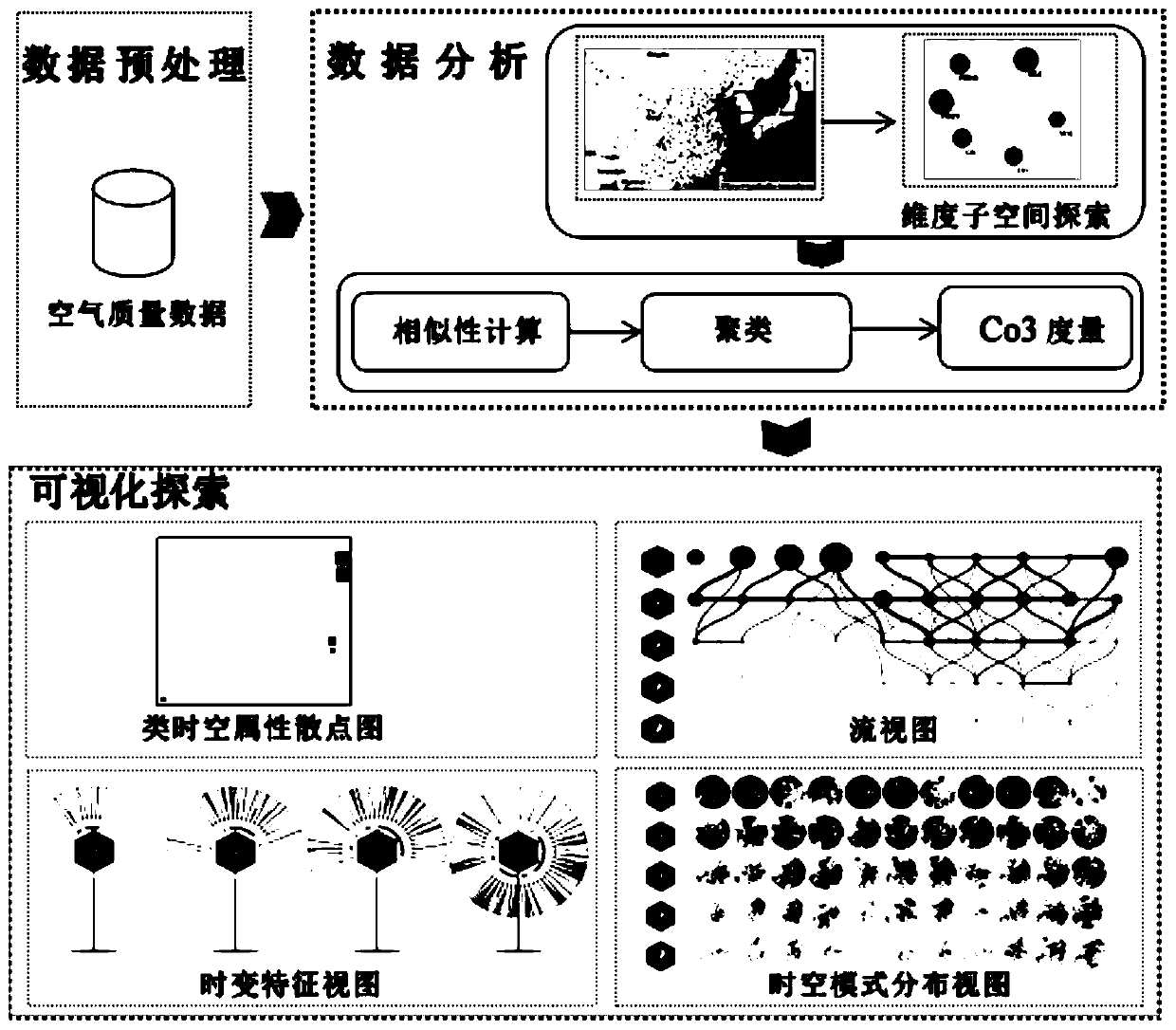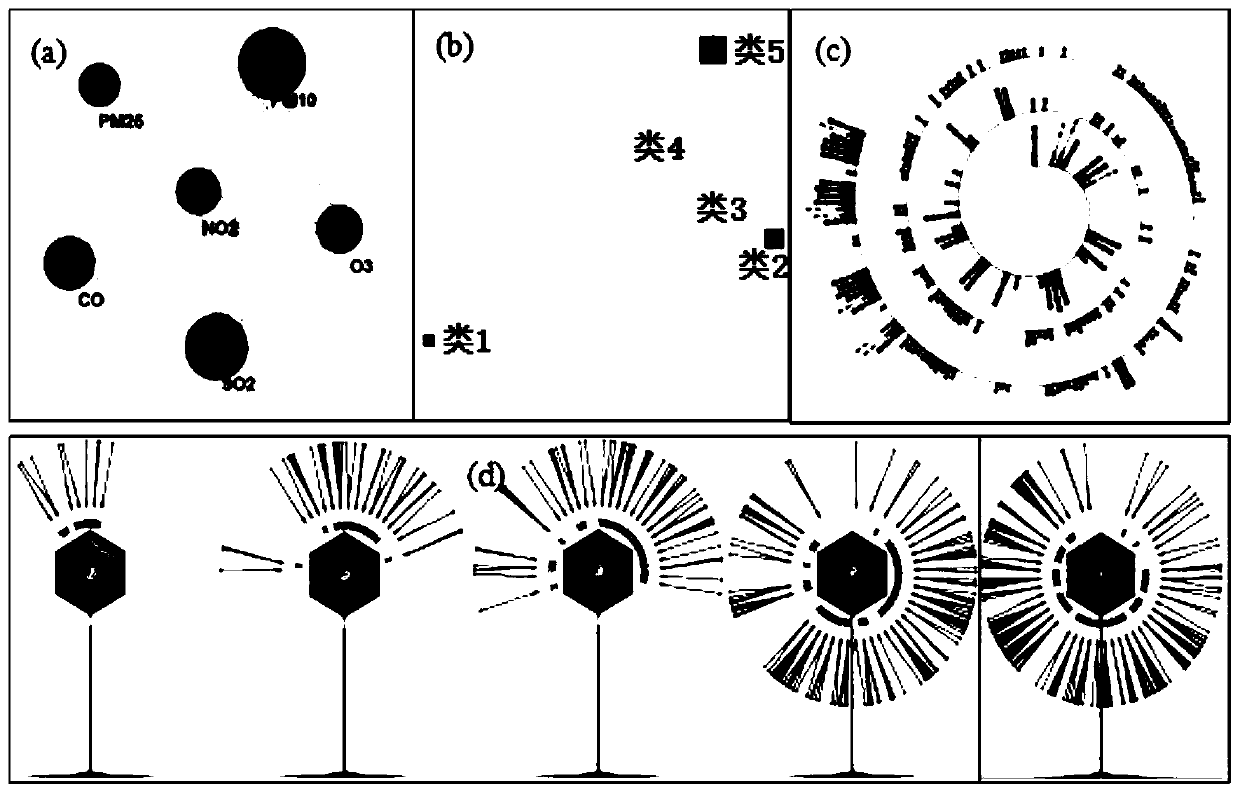Space-time mode visual analysis system and method based on air quality data
A technology of air quality, analysis system, applied in the field of visualization
- Summary
- Abstract
- Description
- Claims
- Application Information
AI Technical Summary
Problems solved by technology
Method used
Image
Examples
Embodiment 1
[0048] In the first embodiment, for the visual exploration of the time-varying pattern of a single city: in this embodiment, Baoding City, Hebei Province was selected from January 5, 2015 to January 3, 2016, and the data of 52 weeks were explored to explore the time-varying pattern distribution of the city. A single city selects all the air quality data of the city for clustering, and then explores its time-varying patterns.
[0049] It is worth noting that we use information entropy and mutual information to measure the uncertainty of variables and the correlation between variables respectively. Large information entropy indicates that the data contains a lot of information, which may directly affect the division of clustering results; mutual information between variables The larger the value, the stronger the correlation of the variables. Based on this, the variables are divided into smaller groups to guide users to explore the air pollution data dimension subspace; informati...
Embodiment 2
[0060] Example 2: Visual exploration of urban agglomeration spatio-temporal patterns: We selected 84 cities such as Beijing, Baoding, and Langfang from the map for a total of 14 weeks from September 28, 2015 to January 3, 2016, to view different patterns of urban agglomeration data For the degree of aggregation and continuity of distribution in space and time, please refer to Figure 4 , select the urban agglomeration through the circular brush operation, Figure 4 The b is a scatter diagram of the spatio-temporal distribution characteristics of the clustered categories to help users select the categories of interest; Figure 5 The time-varying trend view between models helps researchers analyze the dynamic factors of air quality changes; Figure 6 A view of the spatiotemporal distribution between modalities, which helps researchers explore how cities are distributed in space and time in different modalities.
[0061] It is worth noting that exploring the space-time patterns...
Embodiment 3
[0073] In embodiment three, a method for visual analysis of spatio-temporal patterns based on air quality data is based on a visual analysis system for spatio-temporal patterns based on air quality data described in embodiment one, including division of dimension subspaces, Canopy+ K-means clustering algorithm and concentration and continuity identify air quality spatio-temporal patterns, divide the dimension subspace by extracting urban air quality data, and process the dimension subspace of the air quality data according to information entropy and mutual information ; By the Canopy+K-means clustering algorithm, the data with similar characteristics in the air quality data are divided into the same class, so as to obtain the spatio-temporal pattern of the class; The degree of aggregation and the degree of continuity of the distribution in the spatio-temporal pattern are judged for concentration and continuity, respectively.
[0074] The purpose of dimensional subspace divisio...
PUM
 Login to View More
Login to View More Abstract
Description
Claims
Application Information
 Login to View More
Login to View More - R&D
- Intellectual Property
- Life Sciences
- Materials
- Tech Scout
- Unparalleled Data Quality
- Higher Quality Content
- 60% Fewer Hallucinations
Browse by: Latest US Patents, China's latest patents, Technical Efficacy Thesaurus, Application Domain, Technology Topic, Popular Technical Reports.
© 2025 PatSnap. All rights reserved.Legal|Privacy policy|Modern Slavery Act Transparency Statement|Sitemap|About US| Contact US: help@patsnap.com



